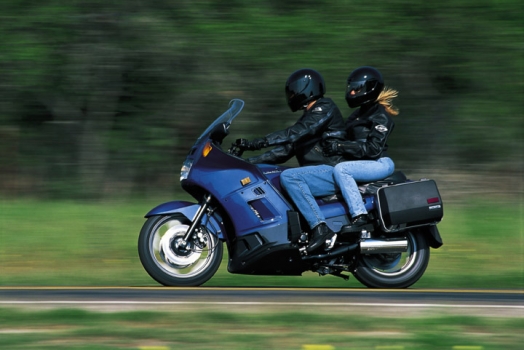
ARE YOU TRULY READY TO RIDE A MOTORCYCLE? Most people who hop aboard a motorcycle think they are ready for just about anything that could happen. Are they really?
By Art Friedman courtesy of Motorcycle Cruiser
Are you really ready to ride a motorcycle?
Most people who get on a motorcycle probably think they are ready for just about anything that could happen. That may be true, if they have very active imaginations and give some credence and thought to how they would cope if some of their fantasies became reality.
The threats most of us probably think about are the usual scenarios: drivers turning left in front of us, oil in a turn, drivers who don’t check their blind spots. But if you use your imagination and look around, you might conceive of threats that aren’t commonplace. Some pretty wild things happen to motorcyclists who are simply riding along, seemingly doing everything right. Over the years I have received letters from a couple of riders who were struck by lightning and woke up in a ditch. I have a clipping about a motorcyclist who was killed after a dog fell on him from an overpass.
Even though I’m not a trained accident investigator, I’ve had detailed looks at the circumstances of crashes and near crashes, which serve as reminders of the potential threats awaiting motorcyclists who don’t prepare for the worst.
The other guy can do almost anything, and he might do it to you. A rider traveling on a Los Angeles freeway honked the very loud dual horns of his Laverda at a woman who had started to change lanes into him without looking. The woman was startled, lurched away then looked to see what had issued the freight-train-like warning. When she saw the vehicle that had frightened her was “just” a motorcycle, she offered a universally understood single-digit salute, then swerved back at him and continued to try to hit him with her car until he used his superior power and ability to split traffic to escape her homicidal wrath. He rode away wondering what the two young children in the car thought.
Riding down a two-lane highway, a motorcyclist was astounded to see an apparently unoccupied oncoming car begin to drift across the center line into his lane. He got on the brakes, pulling onto the shoulder. He was about to roll off the embankment to escape when the driver suddenly popped up into view, clutching the cigarette lighter he had apparently been retrieving from the floor. The driver swerved away, just in time.
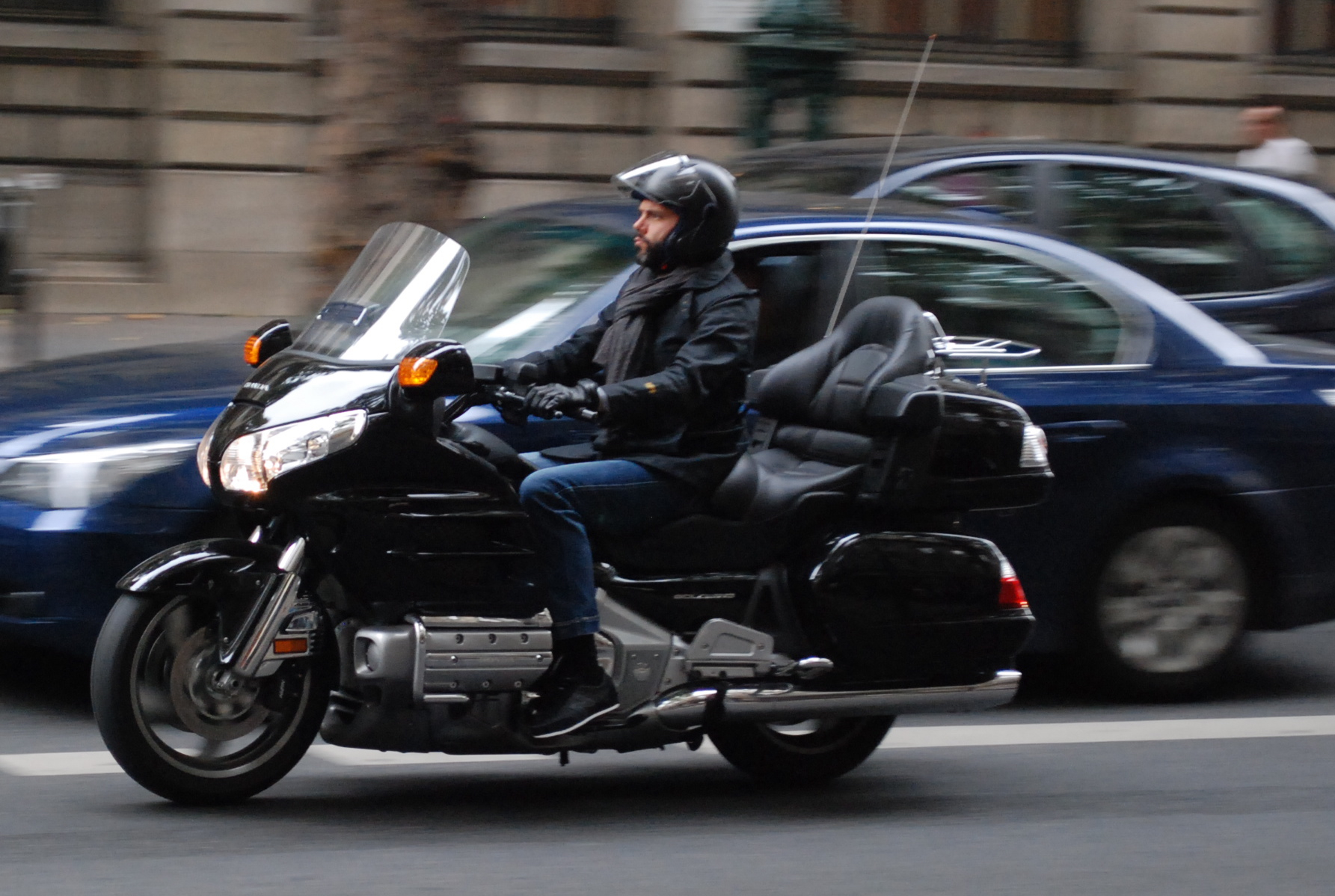
Two motorcyclists riding on a rural Ohio highway came to a road-construction zone marked more than a mile ahead by a series of large fluorescent-orange warning signs. A flagman controlling traffic signaled them to stop. They were waiting when the howling of tires behind them alerted them to unexpected danger. A young driver had overlooked the seemingly impossible-to-ignore signs and kept speeding toward the flagman, until she was alerted by a passenger at the last moment. When she locked up all four tires, she slid slightly to the right and struck only the rider on the right. He was thrown up and forward, landing atop the roadside Armco barrier.
There are quite a few dangers, but if you stay alert and awake it can help you avoid some disastrous situations.
Not all of the transgressions come from car drivers. A motorcyclist riding on a popular mountain road in Southern California approached a corner just as two riders, apparently racing, exited it going the opposite direction. They both ran wide into the first rider’s lane. One passed on either side of him.
The threat can even come from your riding companion. Two riders on tour had already had a long day of riding when night fell. The leading rider felt fine—alert and awake. What he didn’t know, as they approached a truck stopped on the shoulder and he slowed, was that his companion was nearly asleep. The blurry-eyed trailing rider didn’t notice him slow down, struck him from the rear and crashed, though the leader managed to stay on his wheels.
A passenger can get you in trouble, too. Two motorcyclists on one bike were going around a corner when the passenger decided to “help” the rider by leaning into the corner. This caused the bike to lean farther, drag hard and crash.
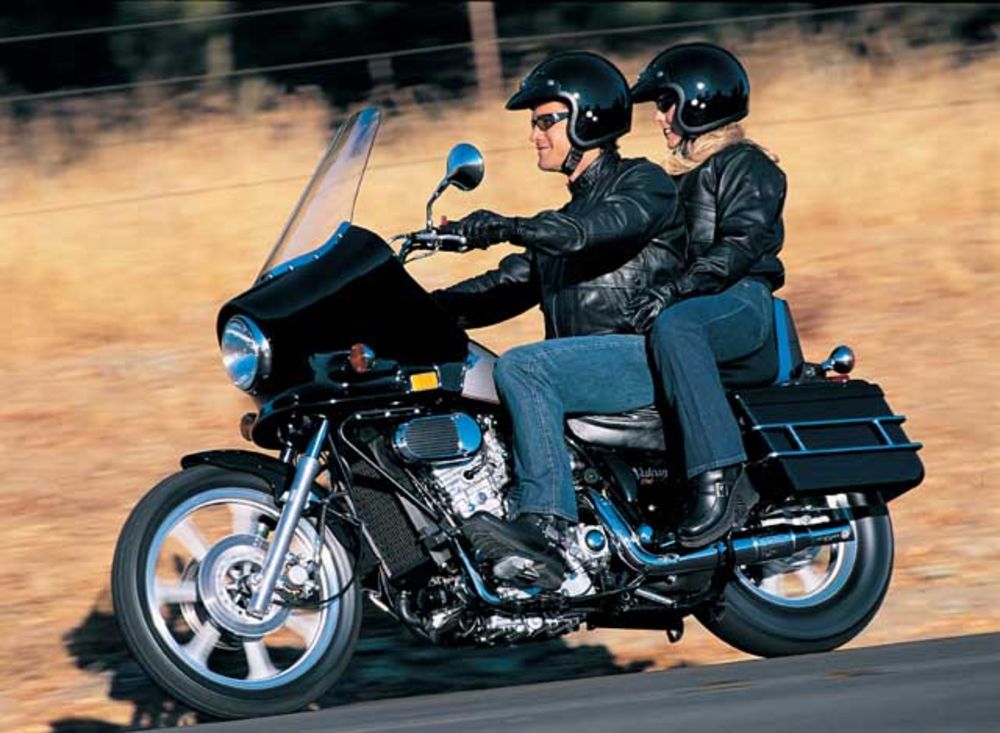
Tires must not be taken for granted, as the rider on a Norton with recently changed tires could testify. The pinched rear tube blew out in the fast lane of an urban interstate, amidst heavy 70-mph traffic.

Seemingly minor failures can also spell big trouble. Consider the Harley rider cruising along, aware that his fuel was getting low. When the engine began to sputter, he was ready. He flipped the fuel selector to reserve, but the engine failed to start again. Suddenly, he was in the left-most of six lanes where two busy interstates converge, on a bike that wouldn’t run. The small pipe that creates a reserve supply had vibrated loose from the petcock.
Even equipment that isn’t part of a motorcycle can get you if it’s attached to it. A rider crashed when one of the bungees pulled loose from his tailpack, permitting the pack to fall to one side and get wedged in the wheel.
Another interstate incident, where a rider totaled a Yamaha XS1100, illustrates that sometimes you simply can’t see the danger, but corners always deserve respect. This happened on a fast 270-degree, right-turning ramp connecting two Los Angeles freeways. The rider took this same route to work every day and was familiar with the two-lane ramp and enjoyed bending around the long curve. On this day he came upon an unusually slow driver in the right lane and pulled out in the left lane to accelerate past before the ramp narrowed down to a single lane. Since he knew fluids spilled by cars and trucks are usually flung outward, he carefully scanned the surface of the left lane before committing himself. He didn’t see any sheen that warned of something slippery, nor did he pick up even a slight scent of gas, oil or coolant. Nonetheless, a moment later he was sliding down the road at 60 mph hoping the driver he had just passed wouldn’t hit him. He didn’t.
In another crash on a back road, the rider saw the sand in the corner but he and the rider behind him both believed from its appearance that it was hardened concrete that had stuck there long before. The first rider’s crash alerted the second rider about their misjudgment.
In another cornering incident, the rider thought he knew the road, since he traveled on it frequently, as recently as that afternoon. It meandered along a southern Wisconsin river, and was a perfect route for an evening ride with the young lady whose attention he’d finally managed to attract. The surprise was the owners of the driveway that intersected the first corner had just graveled it late that day, and gravel had scattered all through the corner as a result. The rider discovered this when his headlight settled on the curve, too late to stop before he had to choose between committing to the corner or running off the road through a ditch. He chose the former and the young woman was very impressed that, as they departed the motorcycle, he had the presence of mind to somehow turn over, grab her and hold her on him as he slid on his back.
Here’s one where there was no warning. The rider was riding in the rain, as he had been for about three hours, on the New York Thruway. The rain finally showed signs of slackening, and since the rider was headed west, he hoped to be out of it soon. Suddenly, with no warning, his BMW twin started whipping back and forth, pitching him off at approximately 60 mph. After a half-hour of walking along the road searching for a clue, he couldn’t find any reason for the sudden loss of control—and the bike, though battered, displayed no problem. In fact, he rode it to his destination, several states away, after cosmetic repairs.
Your environment can toss all sorts of surprises at you, and with a bit of imagination, you might anticipate some of them. We all know to be alert for deer along a rural roadside at night. But how about the rider who couldn’t see (or avoid) the deer that jumped in front of him because it came from an embankment above?
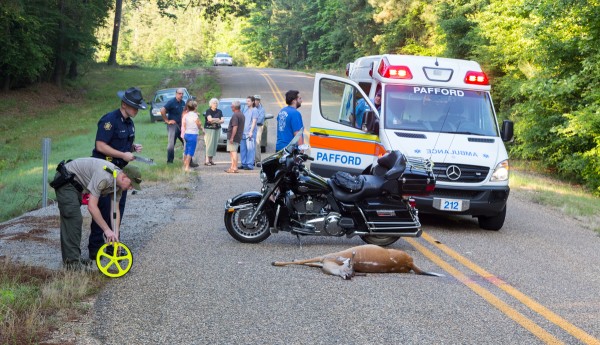
Would you have been ready for this one? One windy day a rider passed workmen unloading corrugated metal siding from a pickup truck. Just as he passed downwind of them, a gust caught a four-by-eight piece of the siding, which flew toward him. It hit him edge-on, hard enough to cause him to swerve across the road. The fact that he veered away when he saw the siding coming allowed it to drop enough to hit him in the shoulder, where it left a scar on his leather jacket, rather than in his bare neck.
Even when there is an obvious threat, something unexpected may be stalking you too. Consider the case of the rider commuting to work in city traffic who came upon a couple in a car who were having such a violent argument that he could hear them shouting through the closed windows from several car lengths away. The passenger was jumping around so violently that the big SUV was rocking, and the driver’s reactions to her were making him swerve slightly. They were in the left lane of three lanes, traveling in the same direction as the rider, who overtook them in the middle lane. In the right lane, up ahead, was another car going about the same speed as the rider. A third car occupied his right rear quarter. As he overtook the arguing couple, the rider shifted his attention left to watch them, so he’d have warning of any sudden change from that quarter. He continued to look as he came abeam, and remembered thinking, “If they don’t cool it, there’s going to be an accident.” It was an accurate prediction, but they weren’t involved. As the rider turned his head to the left to watch the couple, the car ahead to his right moved into his lane in front of him and slowed, apparently in response to a fourth vehicle that was backing down a driveway toward the curb. The rider looked up to see the car immediately and unexpectedly in front of him, its brake lights glowing. He hit the brakes hard, overbraked, and crashed in the middle of the busy boulevard. The warring couple didn’t seem to notice what transpired just outside the passenger’s door.
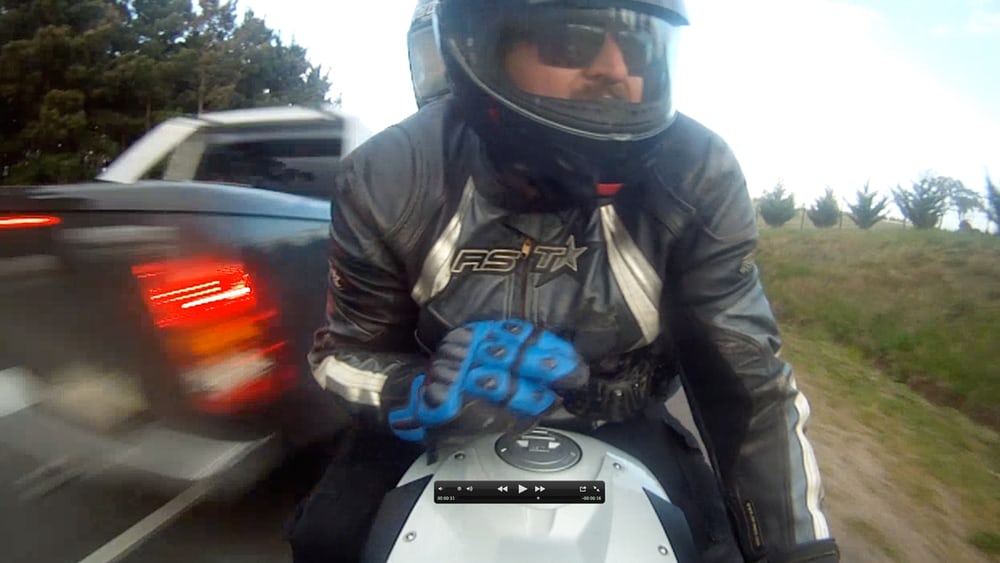
All these accidents and near-misses (or is “near-hits” the correct term?) have several things in common. All might be called freak accidents. They show that a cautious, attentive rider who only focuses on the usual threats can still get in trouble if he doesn’t open his mind to consider unusual dangers. They are reminders that if you approach a ride with the attitude that nothing will go wrong, you’re asking for trouble. Amazingly, none of these incidents involved a serious injury. This was due, in part, to the fact that in each case the rider was wearing solid protective gear.
I know that for certain because all those accidents and events happened to me.
